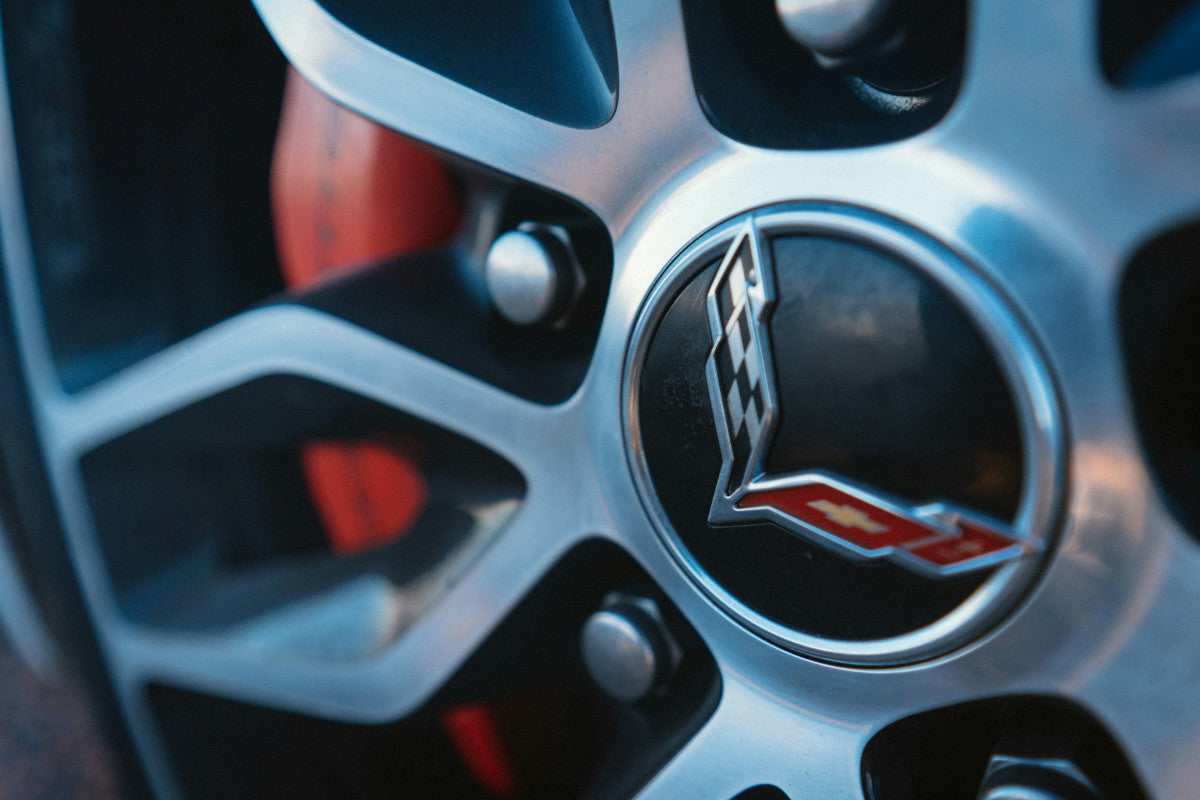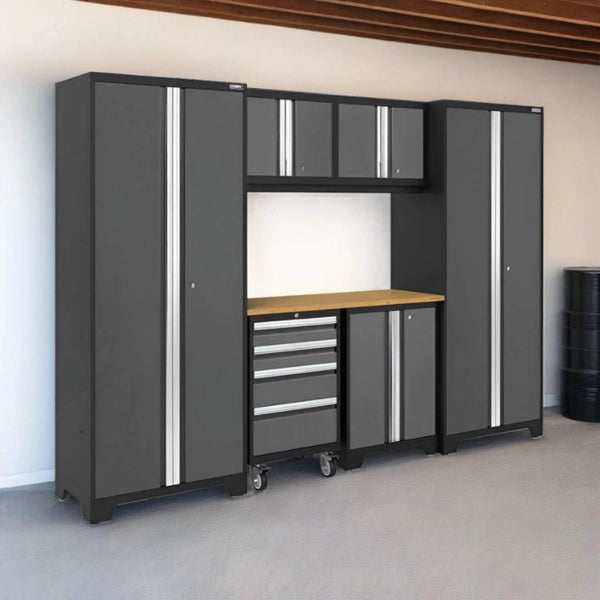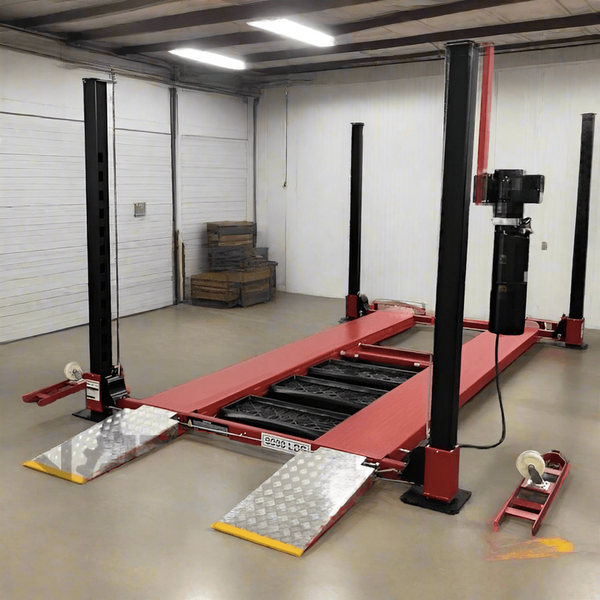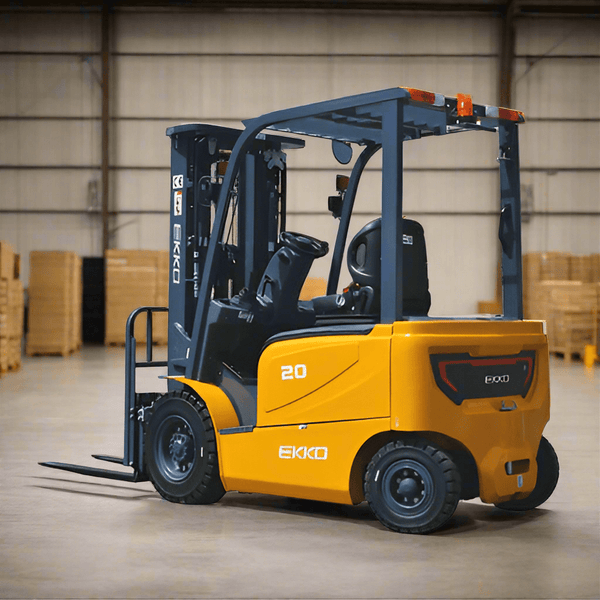
2-Wheel vs 4-Wheel Alignment
You know that wheel alignment keeps a vehicle driving straight, protects tires from uneven wear, and improves handling. But what you might not be so certain about is the difference between 2-wheel vs 4-wheel alignment. You’ve come to the right place. Here’s what you need to know:
- 2-wheel alignment adjusts only the front wheels (toe, camber, caster). Common on trucks and older vehicles with solid rear axles.
- 4-wheel alignment adjusts all four wheels, which is more typical for modern cars and SUVs with independent suspension.
The difference between 2-wheel alignment vs 4-wheel alignment ultimately comes down to how much of the vehicle is corrected. A 2-wheel alignment works in some cases, but a 4-wheel alignment delivers more precision and balance.
My Garage Supplies helps shops and garages handle either service with ease by providing the industry’s best selection of wheel alignment machines from trusted brands like Katool, iDEAL, and more. You’ll get the lowest prices online with world-class support from A to Z.
So, reach out today if you want a personalized recommendation on whether you should prioritize 2-wheel or 4-wheel alignment and what equipment is optimal for YOUR needs!
What is a 2-Wheel Alignment?
A 2-wheel alignment, also called a front-end alignment, adjusts the front wheels only. The tech measures and sets toe (whether the fronts point in or out), camber (tilt in or out at the top), and caster (the steering axis tilt that affects return-to-center and straight-line stability).
A proper front-end alignment still starts with a full vehicle check: tire pressure and wear, ride height, ball joints, tie-rod ends, control arm bushings, and wheel bearings. Alignment won’t hold if parts are bent or worn.
A lot of today’s alignment systems will measure the rear angles and use that reading as a reference (the thrust angle) so the steering wheel ends up centered and the car tracks straight, even though the rear isn’t being adjusted. 2-wheel alignment is appropriate for:
- Trucks and older cars with a fixed rear axle and no rear adjusters.
- Vehicles that show front-only symptoms - a crooked steering wheel after hitting a curb, feathered wear on the fronts, or recent front-end component replacement.
- Situations where the rear reads straight and within spec
This service costs less and has a faster turnaround time, but it won’t correct rear-induced problems (dog-tracking, thrust angle issues, rear camber/toe wear).
This service is common on vehicles with a solid rear axle or a rear suspension that offers no practical adjustments. But what about the other half of the 2-wheel vs 4-wheel alignment comparison?
What is a 4-Wheel Alignment?
As you can probably surmise, a 4-wheel alignment measures and adjusts all four corners so the wheels run parallel to each other and the vehicle tracks straight.
The process typically sets the rear first (rear toe and rear camber when available). Once the rear is square to the car’s centerline, the tech aligns the front (toe, camber, caster) to that rear reference. This sequence locks in a straight thrust line and a centered steering wheel.
You’ll see 4-wheel alignments on most modern cars and SUVs, which use independent rear suspension or have rear adjustments from the factory. It’s also the standard for AWD vehicles, cars that have had suspension work (springs, control arms, bushings), and any vehicle that suffered collision damage or a hard pothole hit. If the car shows irregular tire wear on the rear, drifts despite a centered wheel, or “crab-walks,” a 4-wheel alignment is the right call.
Here’s what gets set and checked with this service:
- Rear: toe (primary), camber when adjustable; verify thrust angle is near zero.
- Front: toe, camber, caster; center the steering wheel and confirm SAI/Included Angle readings if the machine supports it.
- All corners: tire pressure, ride height, bushing play, bent components, wheel runout.
4-wheel alignment leads to stable handling, even tire wear, better straight-line tracking, and fewer comebacks after suspension repairs. It takes more time and can cost more than a front-only service, but it solves problems a 2-wheel alignment can’t touch.
So, do I need a 2-wheel or 4-wheel alignment? We’ll take a closer look at 2-wheel vs 4-wheel alignment below to help you narrow it down to one or the other.
2-Wheel Alignment vs 4-Wheel Alignment: Key Differences to Consider
Choosing between a 2-wheel and a 4-wheel alignment isn’t always straightforward. Both services aim to get your vehicle driving straight and extend tire life, but the scope of adjustment and the situations where each is appropriate vary dramatically.
Scope of Adjustment
You’re only getting front-end adjustment with 2-wheel alignment. The tech centers the steering wheel and corrects toe, camber, and caster up front. The rear wheels are measured but not corrected.
On the other hand, 4-wheel alignment measures and adjusts all four corners. The rear is aligned first, then the front is set relative to the rear, ensuring the entire vehicle tracks on a straight thrust line.
In simple terms, a 2-wheel alignment fine-tunes the steering axle. A 4-wheel alignment squares the whole car.
Vehicle Type Compatibility
The design of the suspension system often dictates which alignment type is even possible between 2-wheel vs 4-wheel alignment. Here’s what makes sense for which types of vehicles:
- Best suited for 2-wheel alignment: Trucks and older vehicles with solid rear axles. The rear wheels don’t have adjustment points in these setups, so front-only alignment is all that’s required.
- Best suited for 4-wheel alignment: Modern cars and SUVs with independent suspension systems. Rear toe and camber are adjustable, and setting all four corners matters for handling and tire wear.
Impact on Performance and Safety
2-wheel alignment is usually fine for vehicles with a fixed axle. It corrects steering pull and front-end tire wear. What it may not address is a crooked thrust angle.
Conversely, 4-wheel alignment improves straight-line stability, cornering balance, and steering response. It reduces irregular tire wear across all four tires, which helps keep braking distances consistent and predictable.
Drivers who want the most precise handling (and shops that want fewer comebacks) lean toward 4-wheel alignments when possible for these reasons.
Cost and Time Investment
The final distinction between a 2-wheel alignment vs 4-wheel alignment is the work and subsequent cost that goes into each. As you can imagine, 2-wheel alignments are quicker and less expensive. Usually, a car is in and out of the shop in just 30-45 minutes.
In contrast, a 4-wheel alignment takes anywhere from 60-90 minutes, depending on the vehicle and adjustments needed. The price difference can be $30–$100 more for a 4-wheel service, but the added accuracy can extend tire life and prevent premature replacements, saving money long term.
So, Do I Need a 2 Wheel or 4-Wheel Alignment?
You should feel pretty clear on which side of the 2-wheel vs 4-wheel alignment comparison makes sense for a given scenario now. The best choice depends on your vehicle, symptoms, and suspension design.
Go with a 2-wheel alignment if:
- You drive a truck or older car with a solid rear axle.
- Your rear wheels measure within spec during the check.
- You’ve only replaced front-end components.
Go with a 4-wheel alignment if:
- You own a modern car, crossover, or SUV with independent suspension.
- You notice uneven tire wear on the rear or the vehicle “dog-tracks.”
- You’ve had suspension work or collision repair that could affect alignment.
- You want the most precise adjustment possible for handling and safety.
A 2-wheel alignment gets the job done for certain vehicles, but a 4-wheel alignment delivers a more complete, long-lasting solution. That’s why shops should invest in 4-wheel alignment capability. You can provide a higher level of service and keep customers coming back.
Upgrade Your Shop’s Workflow at My Garage Supplies
The difference between a good alignment and a great one often comes down to the equipment behind it. My Garage Supplies carries a range of professional-grade wheel alignment machines designed to handle modern suspension systems with speed and accuracy.
Whether you’re running a busy repair shop or adding alignment services for the first time, our machines help you work faster, reduce comebacks, and keep customers happy.
And with our expert guidance, you don’t have to guess which system fits your shop’s workflow. We’ll help you choose the right alignment machine and support you every step of the way.
From the best wheel alignment machine to the best residential garage car lifts, this is your one-stop shop for everything you need to ensure your shop runs smoothly and efficiently. Get in touch for a personalized recommendation or shop now!
Bringing Our 2-Wheel vs 4-Wheel Alignment Comparison to a Close
We hope this 2-wheel alignment vs 4-wheel alignment comparison has left you clear on the differences and advantages of each. The choice between 2-wheel vs 4-wheel alignment ultimately comes down to vehicle suspension, symptoms, and the level of precision you want.
A 2-wheel alignment can correct front-end issues on trucks and solid axle vehicles, while a 4-wheel alignment gives modern cars/SUVs a complete reset for handling, safety, and tire life.
Whether your shop specializes in wheel balancing vs alignment or both, My Garage Supplies carries the equipment you need to work safer and more efficiently. Shop tire changers, alignment machines, wheel balancers, and more from the industry’s top brands today!



